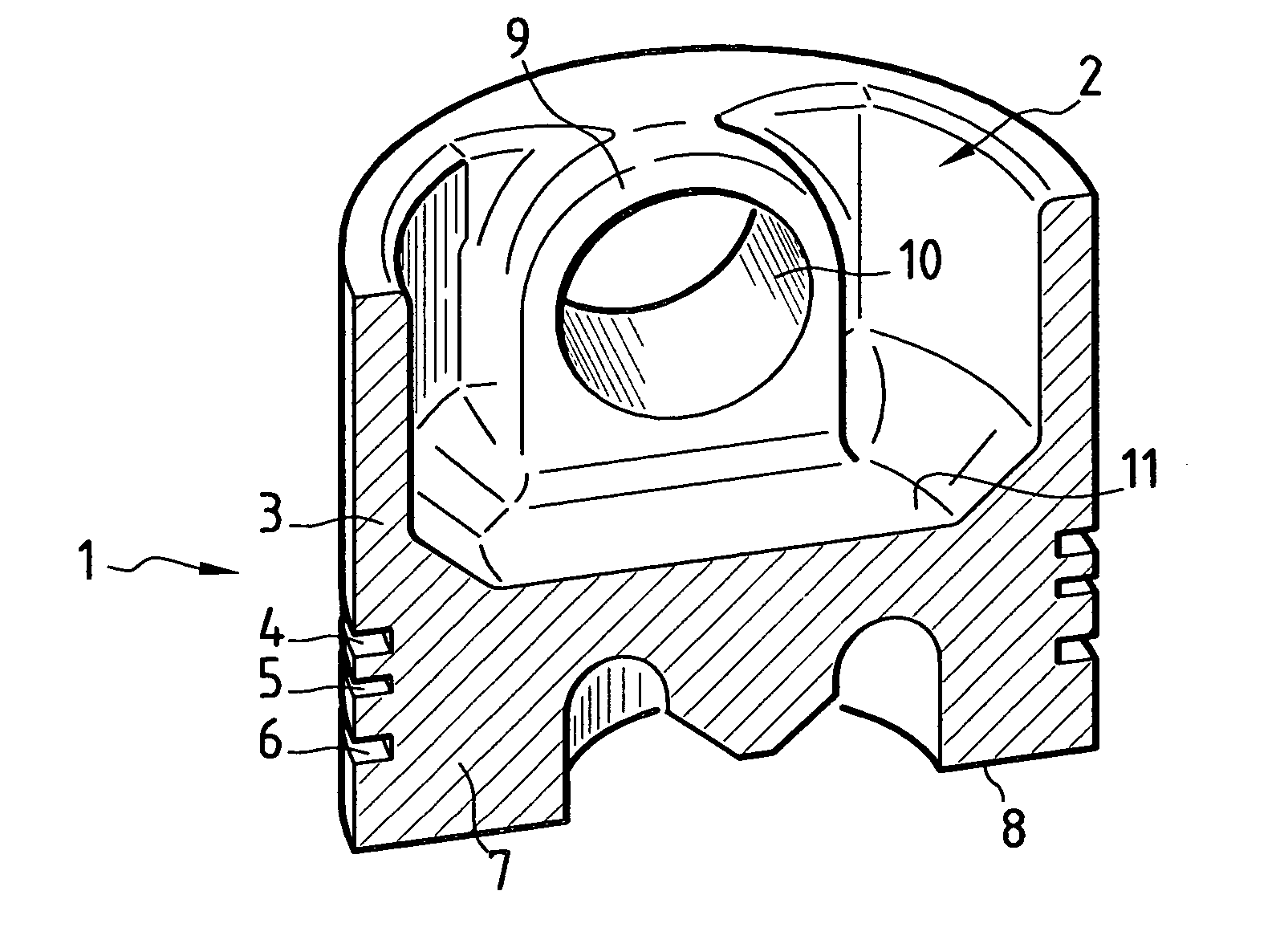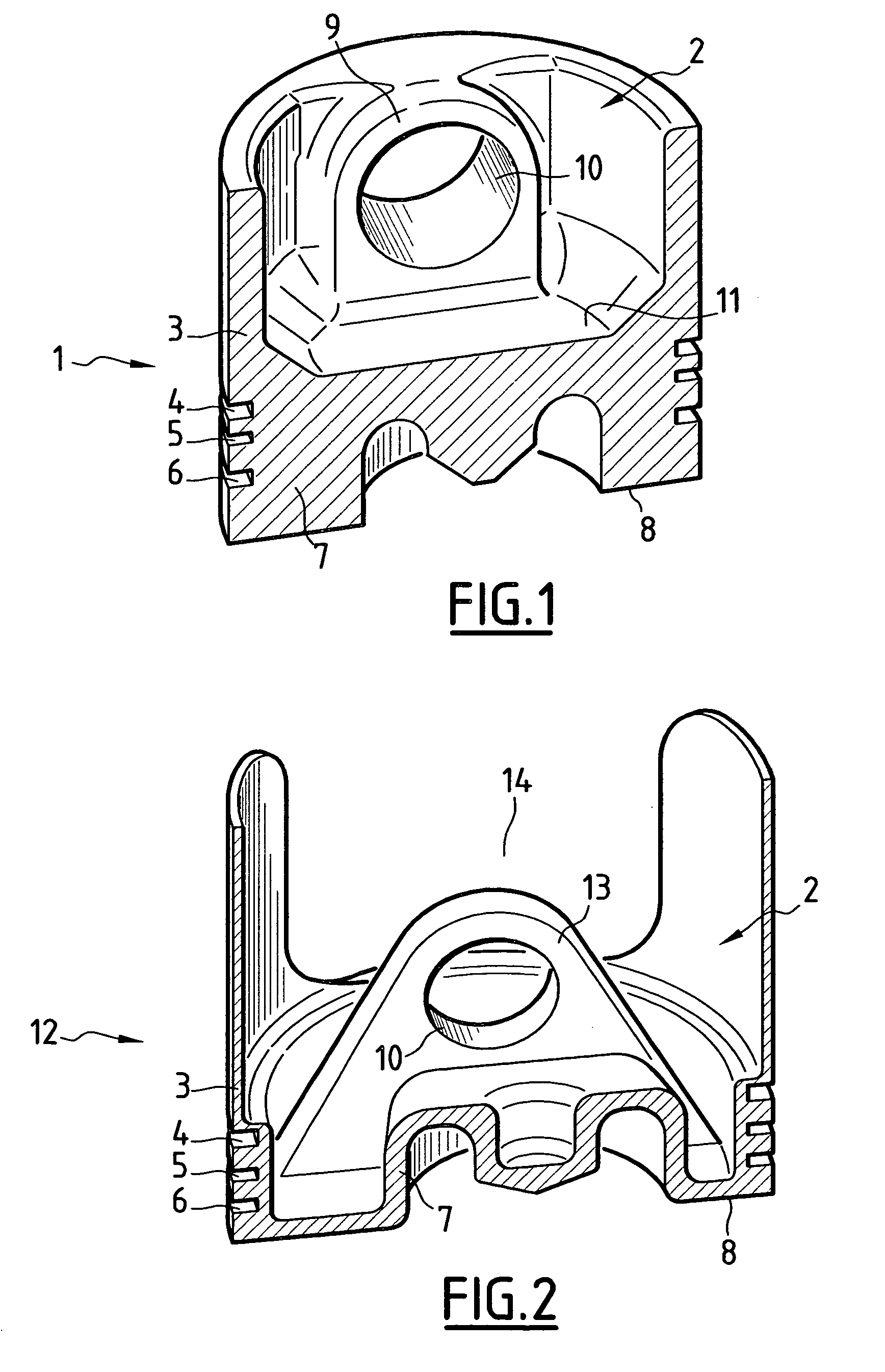Method of manufacture of a piston for an internal combustion engine, and piston thus obtained
a technology of internal combustion engine and piston, which is applied in the direction of machines/engines, mechanical equipment, chemistry apparatus and processes, etc., can solve the problems of increasing complexity of piston design, high cost, and inability to manufacture conventional pistons
- Summary
- Abstract
- Description
- Claims
- Application Information
AI Technical Summary
Benefits of technology
Problems solved by technology
Method used
Image
Examples
example 2 (the one used to produce the piston according to fig.2)
EXAMPLE 2 (the one used to produce the piston according to FIG. 2)
[0094] C=0.962%; Mn=0.341%; Si=0.237%; Cr=1.500%; Ni=0.089%; Mo=0.017%; Cu=0.161%; Al=0.037%; S=0.01%; P=0.009%; V=0.004%; Ti=0.002%; Sn=0.002%; N=41 ppm.
[0095] The measured solidus temperature of this steel is 1315.degree. C. and the measured liquidus temperature is 1487.degree. C. The thixoforging preferably takes place at 1405.degree. C.
example 3
[0096] C=0.825%; Mn=0.649%; Si=0.213%; Cr=0.100%; Ni=0.062%; Cu=0.107%; Al=0.035%; S=0.007%; P=0.007%; N=55 ppm.
[0097] The measured solidus temperature of this steel is 1360.degree. C. and the measured liquidus temperature is 1490.degree. C. The thixoforging preferably takes place at 1429.degree. C.
[0098] It should be noted that the measured liquidus and solidus temperatures to which reference has just been made may differ considerably from the liquidus and solidus temperatures calculated as a function of the composition of the steel by the formulae conventionally available in the literature. In fact, these formulae are valuable in the case where the temperature of the steel lowers by several degrees per minute during solidification followed by cooling. For the determination of the optimum thixoforging temperature, the solidus and liquidus temperatures must be measured in the real conditions to which the billets will be subjected, namely reheating to ambient temperature, effected by...
PUM
| Property | Measurement | Unit |
|---|---|---|
| diameter | aaaaa | aaaaa |
| thickness | aaaaa | aaaaa |
| distance | aaaaa | aaaaa |
Abstract
Description
Claims
Application Information
 Login to View More
Login to View More - R&D
- Intellectual Property
- Life Sciences
- Materials
- Tech Scout
- Unparalleled Data Quality
- Higher Quality Content
- 60% Fewer Hallucinations
Browse by: Latest US Patents, China's latest patents, Technical Efficacy Thesaurus, Application Domain, Technology Topic, Popular Technical Reports.
© 2025 PatSnap. All rights reserved.Legal|Privacy policy|Modern Slavery Act Transparency Statement|Sitemap|About US| Contact US: help@patsnap.com


